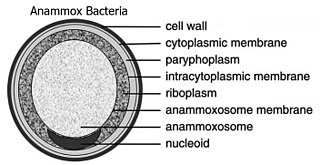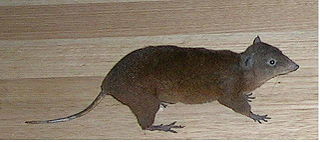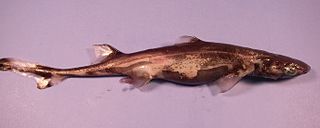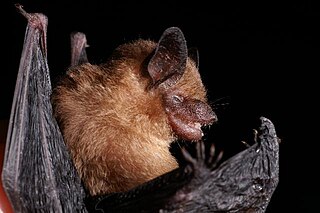Panthera is a genus within the family Felidae that was named and described by Lorenz Oken in 1816 who placed all the spotted cats in this group. Reginald Innes Pocock revised the classification of this genus in 1916 as comprising the tiger, lion, jaguar, and leopard on the basis of common cranial features. Results of genetic analysis indicate that the snow leopard also belongs to the Panthera, a classification that was accepted by IUCN Red List assessors in 2008.

Sphyrna is a genus of hammerhead sharks with a cosmopolitan distribution in the world's oceans. Members of Sphyrna have a tendency to inhabit coastal waters along the intertidal zone rather than the open ocean, as their prey items such as invertebrates, fish, rays, small crustaceans and other benthic organisms hiding in the sands and sediment along these zones. Members of Sphyrna are also known by synonyms such as Zygaena, Cestracion, and Sphyrichthys. The earliest species described of this genus was Sphyrna zygaena by Carl Linnaeus in 1758, while the latest described member Sphyrna gilberti was discovered and described in 2013.

Planctomycetes are a phylum of aquatic bacteria and are found in samples of brackish, and marine and fresh water. They reproduce by budding. In structure, the organisms of this group are ovoid and have a holdfast, at the tip of a thin cylindrical extension from the cell body called the stalk, at the nonreproductive end that helps them to attach to each other during budding.

Podoviridae is a family of viruses in the order Caudovirales. Bacteria serve as natural hosts. There are currently 132 species in this family, divided among 3 subfamilies and 45 genera. This family is characterized by having very short, noncontractile tails.

The Hypsiprymnodontidae are a family of macropods, one of two families containing animals commonly referred to as rat-kangaroos. The single known extant genus and species in this family, the musky rat-kangaroo, Hypsiprymnodon moschatus, occurs in northern Australia. During the Pleistocene, this family included the megafauna genus Propleopus.

Chelodina, collectively known as snake-necked turtles, is a large and diverse genus of long-necked chelid turtles with a complicated nomenclatural history. Although in the past, Macrochelodina and Macrodiremys have been considered separate genera and prior to that all the same, they are now considered subgenera of the Chelodina, further Macrochelodina and Macrodiremys are now known to apply to the same species, hence Chelydera is used for the northern Snakeneck Turtles.

Cottus is a genus of the sculpin family Cottidae. They are often referred to as the "freshwater sculpins", as they are the principal genus of sculpins to be found in fresh water. They are native to the Palearctic and Nearctic.

Macrochelys is a genus of very large freshwater turtles in the family Chelydridae from Southeastern United States. Only a single extant species was recognized until a 2014 study divided it into two, or possibly three species.

Apristurus is a genus of catsharks, the family Scyliorhinidae, commonly known as the ghost or demon catsharks.

Etmopterus is a genus of lantern sharks in the squaliform family Etmopteridae. They are found in deep sea ecosystems of the Atlantic, Indian and Pacific Oceans.

Eptatretus is a large genus of hagfish.

Rhogeessa is a genus of bats within the vesper bats family, Vespertilionidae.

Silvanidae, "silvan flat bark beetles", is a family of beetles in the superfamily Cucujoidea, consisting of 58 described genera and about 500 described species. The family is represented on all continents except Antarctica, and is most diverse at both the generic and species levels in the Old World tropics.











